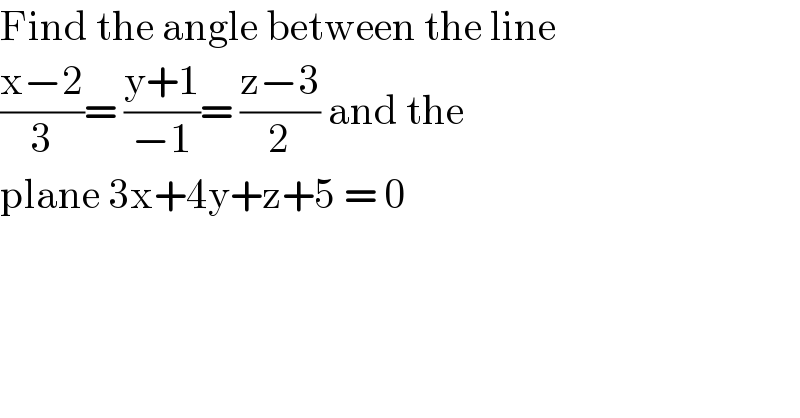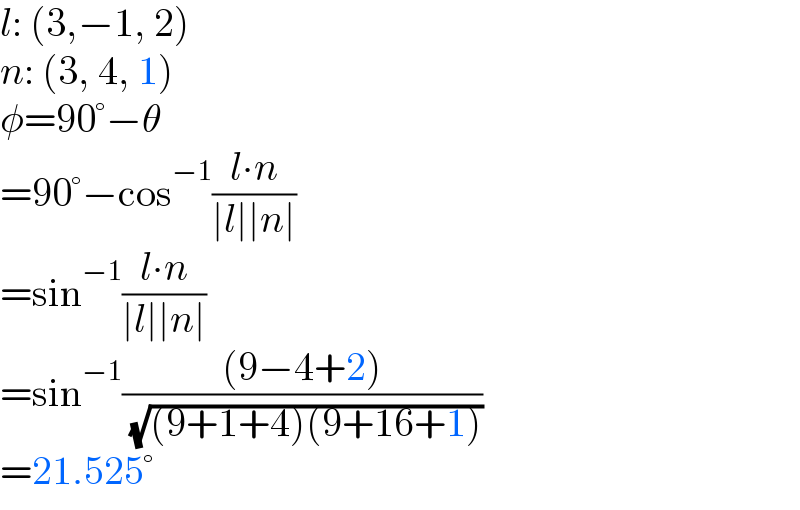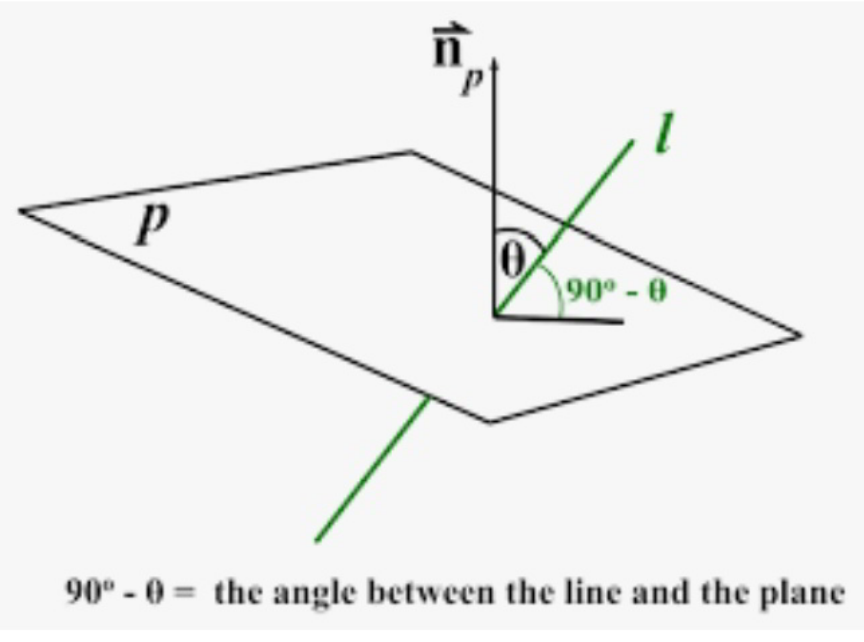
Question Number 132904 by bramlexs22 last updated on 17/Feb/21

$$\mathrm{Find}\:\mathrm{the}\:\mathrm{angle}\:\mathrm{between}\:\mathrm{the}\:\mathrm{line}\: \\ $$$$\frac{\mathrm{x}−\mathrm{2}}{\mathrm{3}}=\:\frac{\mathrm{y}+\mathrm{1}}{−\mathrm{1}}=\:\frac{\mathrm{z}−\mathrm{3}}{\mathrm{2}}\:\mathrm{and}\:\mathrm{the}\: \\ $$$$\mathrm{plane}\:\mathrm{3x}+\mathrm{4y}+\mathrm{z}+\mathrm{5}\:=\:\mathrm{0}\: \\ $$
Answered by mr W last updated on 17/Feb/21

$${l}:\:\left(\mathrm{3},−\mathrm{1},\:\mathrm{2}\right) \\ $$$${n}:\:\left(\mathrm{3},\:\mathrm{4},\:\mathrm{1}\right) \\ $$$$\phi=\mathrm{90}°−\theta \\ $$$$=\mathrm{90}°−\mathrm{cos}^{−\mathrm{1}} \frac{{l}\centerdot{n}}{\mid{l}\mid\mid{n}\mid} \\ $$$$=\mathrm{sin}^{−\mathrm{1}} \frac{{l}\centerdot{n}}{\mid{l}\mid\mid{n}\mid} \\ $$$$=\mathrm{sin}^{−\mathrm{1}} \frac{\left(\mathrm{9}−\mathrm{4}+\mathrm{2}\right)}{\:\sqrt{\left(\mathrm{9}+\mathrm{1}+\mathrm{4}\right)\left(\mathrm{9}+\mathrm{16}+\mathrm{1}\right)}} \\ $$$$=\mathrm{21}.\mathrm{525}° \\ $$
Commented by liberty last updated on 17/Feb/21

$$\mathrm{why}\:\mathrm{n}:\:\left(\mathrm{3},\mathrm{4},\mathrm{5}\right)\:?\:\mathrm{it}\:\mathrm{should}\:\left(\mathrm{3},\mathrm{4},\mathrm{1}\right) \\ $$
Commented by mr W last updated on 17/Feb/21

$${it}'{s}\:{misread}.\:{thanks}\:{for}\:{pointing}\:{out}! \\ $$
Commented by mr W last updated on 17/Feb/21

